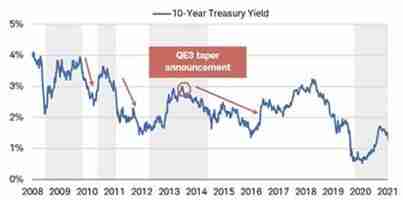James Stewart September 14, 2021
Natural gas is one of the main sources of energy in the US. It is used to generate electricity for general consumption as well as provide heating for homes and factories in winter. Over 50% of US homes are heated by natural gas. Even those that aren’t still have exposure to natural gas prices, as 38% of total US natural gas consumption is used to generate the electricity needed to heat homes!
Natural gas prices rarely make headlines, but they’re important to track given how dominant they are in the US energy mix. Over the last week they have moved over $5 per BTU (MM). This is the highest level in about 7 years. This is very unusual to see at this time of year. Typically, the spring and fall allow supply to build as demand wanes with more moderate temperatures in much of the country. Prices also ease over this period. But if the current trend continues and we enter the winter with tight supply, we are almost assured of seeing higher prices. An icy arctic blast could potentially put prices in the double-digit range, albeit temporarily.
What’s driving higher prices?
International prices remain exceptionally high as well. Low inventory levels in Europe are pushing prices higher to incentivize imports there coupled with an increase in demand. Wind driven electricity from the North Sea has declined over the past few weeks due unusual weather patterns. Gas and coal-fired electricity plants were called in to make up the shortfall from wind. Also, higher prices for the gas in Asia are pulling shipments there, which is exacerbating the problem for Europe. LNG exports out of the US are maxed out, which is adding to price pressures in the US as supplies have not budged higher to offset the exports.
Production from the Gulf of Mexico is also down significantly. Hurricane Ida not only hit 90% of natural gas output but also did major damage to key onshore staging areas. It is taking much longer to restore production because of that. Over 78% of the Gulf of Mexico’s Natural gas production remains offline, and there is not a clear timeline as to when things will get back to normal. The pace of recovery to production is one of the slowest in history. Not even hurricane Katrina in 2005 was as damaging.
What’s the downstream impact?
Poor production output and the subsequent higher gas prices also impact the pipeline companies that transport the gas. The Producer Price Index (PPI) for August came in strong at 0.7% increase vs. an expected 0.6% increase. This brings the year over year change to +8.3%, which is staggering. PPI increases are very important for pipeline companies since the Federal Energy Regulatory Commission (FERC) uses an index tariff system that allows these companies to increase tariff rates when the PPI increases. At present levels, the pipeline tariffs would increase by over 9%!
That’s a sharp uptick. The increase is meant to cover rising costs, but so far companies have stated that costs are not increasing at the same rate as the PPI. This should allow for solid revenue growth. The pipeline companies will be able to buy back shares, pay down debt, or increase dividends with the extra revenue. After several years of headwinds and dividend reductions for these companies, we can see a situation developing where they are able to once again able to provide attractive total returns – raising dividends and price appreciation.












